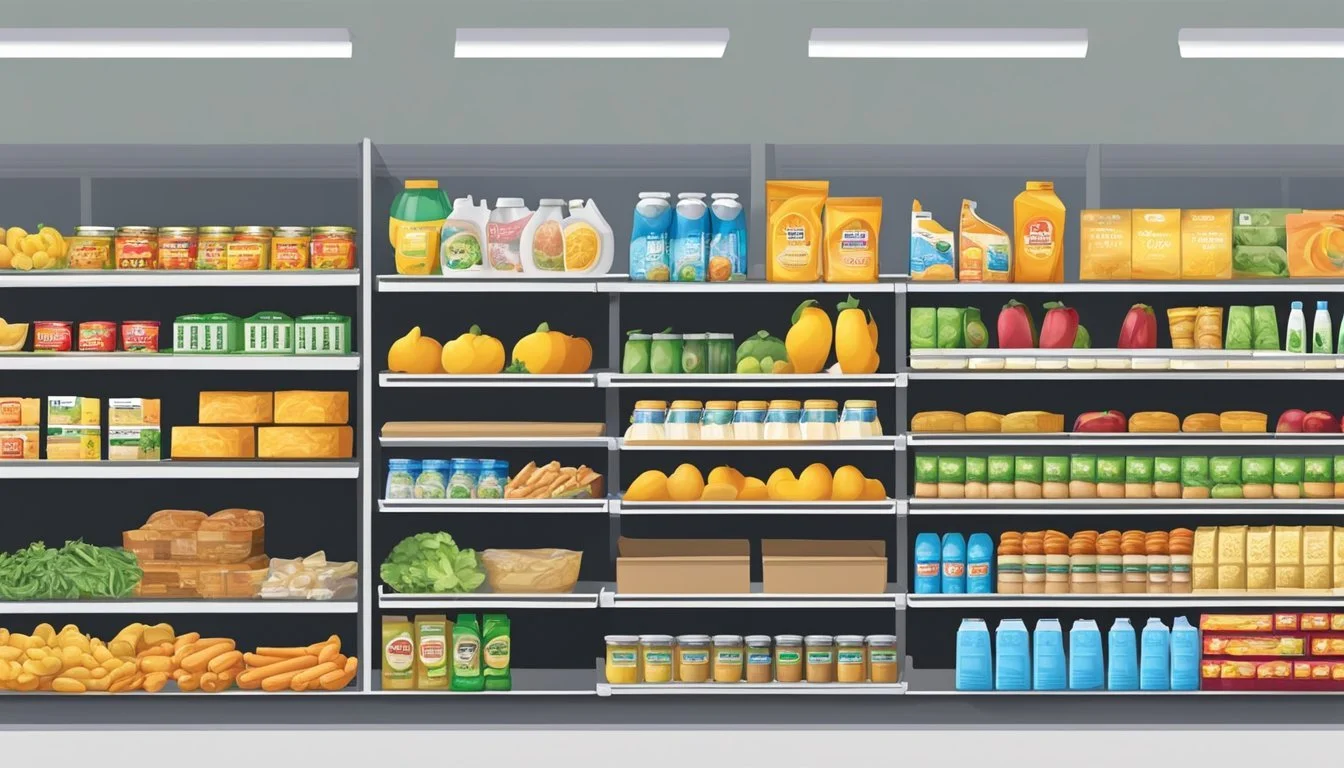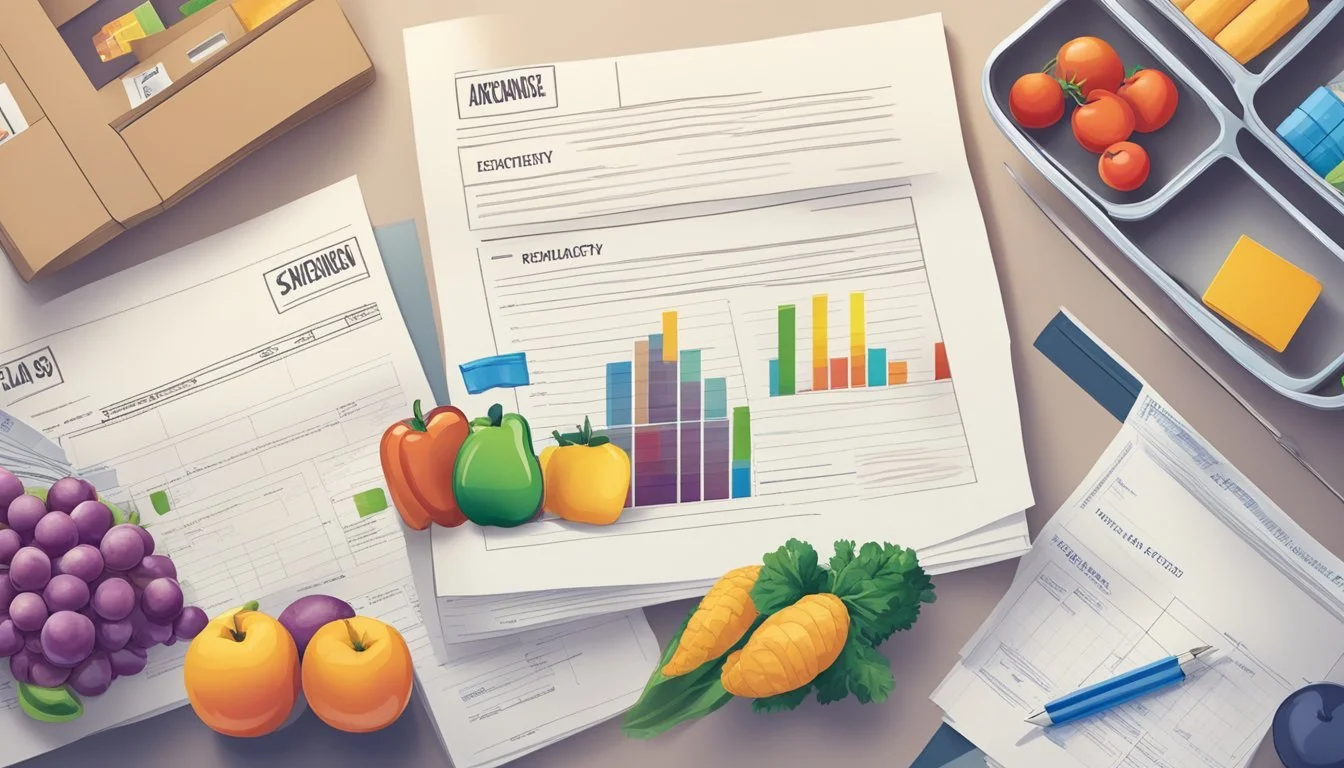Albertsons vs Dollar General
Comparing Prices, Selection, and Quality
Grocery shopping is a crucial part of everyday life, and choosing the right store can significantly impact both your budget and the quality of food you bring home. Albertsons and Dollar General are two popular options for consumers, each with its own unique offerings and strengths.
Albertsons, a traditional supermarket chain, provides a wide selection of fresh produce, meats, and brand-name products. With its recent merger talks involving Kroger, Albertsons is poised to become an even more significant player in the grocery market. For shoppers seeking a diverse range of products and a full-service grocery experience, Albertsons typically offers more options than Dollar General.
Dollar General, on the other hand, focuses on providing low-cost items and convenience. While its grocery selection may be more limited, Dollar General often beats larger chains on price for everyday essentials. This makes it an attractive option for budget-conscious consumers or those looking for quick, grab-and-go items.
Company Overviews
Albertsons and Dollar General represent two distinct approaches to retail grocery. Albertsons focuses on traditional supermarkets, while Dollar General targets budget-conscious shoppers with smaller format stores.
Albertsons: History and Growth
Albertsons Companies, Inc. was founded in 1939 in Boise, Idaho. The company has grown through mergers and acquisitions to become one of the largest food and drug retailers in the United States.
Albertsons operates 2,273 stores across 34 states under various banners including Safeway, Vons, Jewel-Osco, and Shaw's. In 2015, Albertsons merged with Safeway, significantly expanding its market presence.
The company competes with major players like Kroger and Walmart in the supermarket space. Albertsons offers a wide range of products, including fresh produce, meats, bakery items, and household goods.
Dollar General: Expansion and Strategy
Dollar General Corporation was founded in 1939 in Kentucky. The company has focused on rapid expansion, targeting rural and suburban areas with limited access to larger retailers.
Dollar General operates over 18,000 stores across 47 states. Its stores are typically smaller than traditional supermarkets, averaging around 7,400 square feet.
The retailer's strategy centers on offering everyday low prices on a limited selection of essential items. Dollar General has expanded its grocery offerings in recent years, including fresh produce in some locations.
Dollar General competes with other discount retailers like Family Dollar and Dollar Tree. The company's expansion has put pressure on traditional grocers in many markets.
Pricing Strategies
Albertsons and Dollar General employ distinct pricing strategies to attract and retain customers in the competitive grocery market.
Evaluating Price Points
Albertsons positions itself as a traditional supermarket, offering a wide range of products at varying price points. The chain frequently adjusts prices based on market conditions and local competition. Dollar General, true to its name, focuses on value-driven pricing. Many items are priced at $1 or less, with others capped at $5.
Dollar General's everyday low prices appeal to budget-conscious shoppers. The company leverages its smaller store formats and limited selection to keep overhead costs down. Albertsons, in contrast, maintains higher overall prices but compensates with a broader product range and fresher produce.
Promotions and Discounts
Both retailers use promotions to drive sales, but their approaches differ. Albertsons runs weekly specials, digital coupons, and loyalty program discounts. The chain often features buy-one-get-one deals on popular items. Its Just for U app provides personalized offers based on shopping history.
Dollar General relies less on traditional sales circulars. Instead, it focuses on consistent low pricing and simple promotions like $5 off $25 purchase coupons. The company's DG Digital Coupons program offers additional savings on select items.
Albertsons' promotions tend to be more diverse, including fuel rewards and partnerships with specialty grocers. Dollar General's strategy emphasizes simplicity and everyday value, appealing to shoppers seeking quick, affordable grocery runs.
Products and Quality
Albertsons and Dollar General offer distinct product ranges and quality levels to cater to different consumer needs. Their selections vary in breadth, store brand offerings, fresh produce availability, and meat and deli options.
Grocery Selection
Albertsons provides a comprehensive grocery selection typical of full-service supermarkets. Its stores stock a wide range of products across categories, including pantry staples, frozen foods, dairy, and specialty items. Dollar General, in contrast, focuses on a more limited assortment of essential groceries and household goods. The discount chain emphasizes quick-grab items and non-perishables.
Albertsons typically carries 30,000-50,000 unique products in its stores. Dollar General stores stock around 10,000-12,000 items on average. This difference reflects their divergent business models and target markets.
Store Brands vs. National Brands
Both retailers offer a mix of store brands and national brands, but with different approaches. Albertsons develops multiple private label lines across price tiers, such as Signature Select and O Organics. These store brands often compete directly with national brands in quality and packaging.
Dollar General focuses on lower-priced store brands like Clover Valley and DG Home. These products aim to provide budget-friendly alternatives to national brands. The discount chain stocks fewer national brand options compared to Albertsons.
• Albertsons: Wide range of store brands across price points • Dollar General: Focus on budget-friendly private labels
Organic and Fresh Produce
Albertsons maintains dedicated produce departments with a variety of fresh fruits and vegetables. Many locations offer organic options alongside conventional produce. The supermarket chain invests in produce displays and refrigeration to maintain quality.
Dollar General's fresh produce offerings are limited. Some stores carry a small selection of basic fruits and vegetables, but it's not a core focus. Organic produce is rarely available at Dollar General locations.
Fresh produce availability:
Albertsons: Extensive selection, includes organic options
Dollar General: Limited selection, focus on shelf-stable items
Meat and Deli
Albertsons features full-service meat and deli departments in most stores. Customers can find fresh cuts of meat, poultry, and seafood, as well as prepared foods and sliced deli meats and cheeses. Many locations have in-store butchers and offer custom cuts.
Dollar General typically does not have dedicated meat or deli departments. The chain sells some pre-packaged meats and frozen options but lacks fresh-cut or custom offerings. Deli items are limited to pre-packaged lunch meats and cheeses.
Meat and deli comparison: • Albertsons: Full-service departments, fresh cuts, prepared foods • Dollar General: Limited to pre-packaged and frozen options
Customer Experience
Albertsons and Dollar General offer distinct customer experiences, shaped by their store layouts, checkout processes, and employee interactions. These factors significantly influence shopper satisfaction and loyalty.
Store Layout and Design
Albertsons stores typically feature wide aisles and clearly organized departments. Fresh produce, bakery, and deli sections are prominently displayed, creating an inviting atmosphere for customers seeking quality groceries.
Dollar General stores have a more compact layout, focusing on efficiency. Aisles are narrower, with products densely packed on shelves. This design allows for quick shopping trips but may feel cramped during busy periods.
Signage in Albertsons is often more detailed, helping shoppers locate specific items. Dollar General uses simple, clear signage to highlight deals and essential product categories.
Checkout Efficiency
Albertsons generally provides multiple checkout options, including staffed lanes, self-checkout kiosks, and sometimes express lanes for small purchases. This variety helps manage customer flow during peak hours.
Dollar General typically has fewer checkout lanes, which can lead to longer wait times during busy periods. However, their streamlined product selection often results in quicker transactions per customer.
Both chains have implemented mobile payment options to speed up the checkout process. Albertsons offers a more robust digital coupon system, while Dollar General focuses on straightforward price discounts.
Employee and Customer Interactions
Albertsons invests in customer service training, encouraging employees to assist shoppers with product locations and recommendations. Staff members are often knowledgeable about specialty departments like deli and bakery.
Dollar General's lean staffing model means fewer employees are available on the sales floor. Interactions are typically brief but friendly, focusing on efficient transactions rather than extensive customer assistance.
Both chains prioritize friendly greetings and quick problem resolution at checkout. Albertsons may offer more personalized service, while Dollar General emphasizes speedy, no-frills interactions.
Market Presence and Distribution
Albertsons and Dollar General have distinct strategies for market presence and distribution. Their approaches differ in terms of store locations, target demographics, and supply chain logistics.
Location and Accessibility
Albertsons operates primarily in urban and suburban areas, with a strong presence in Western states like California, Washington, and Oregon. The company focuses on full-service supermarkets catering to middle-income shoppers.
Dollar General, in contrast, targets rural and low-income communities. Its smaller-format stores are often found in areas underserved by larger retailers. This strategy has allowed Dollar General to expand rapidly, surpassing 18,000 stores across 47 states.
Both chains face competition from retail giants like Walmart and Amazon, which have been expanding their grocery offerings. Target has also been increasing its focus on food and beverage sales.
Distribution Centers and Logistics
Albertsons maintains a network of distribution centers strategically located near major markets. These facilities support efficient restocking of stores and help manage perishable inventory.
Dollar General has invested heavily in its DG Fresh initiative, aiming to self-distribute fresh and frozen foods. The company plans to operate up to 17 DG Fresh facilities by the end of 2022. This move allows Dollar General to reduce costs and improve product availability in its stores.
Both retailers have been adapting their supply chains to meet growing demand for online ordering and delivery services. Albertsons has partnered with third-party delivery platforms, while Dollar General has been expanding its DG Pickup service.
Financial Performance
Albertsons and Dollar General exhibit distinct financial profiles reflecting their different market positions and strategies. Their revenue, earnings, dividends, and stock performance provide key insights into their financial health and growth prospects.
Revenue and Earnings Analysis
Albertsons reported net sales of $71.9 billion for fiscal year 2022, a 3.7% increase from the previous year. The company's net income reached $1.6 billion. Dollar General's net sales for fiscal year 2022 totaled $37.8 billion, up 10.6% year-over-year. Its net income was $2.4 billion.
Dollar General's higher growth rate reflects its expansion strategy and focus on value-conscious consumers. Albertsons' larger revenue base stems from its broader product range and higher average transaction values.
Both companies have maintained consistent profitability, but Dollar General's profit margins tend to be higher due to its lean operating model and focus on smaller-format stores.
Dividend and Stock Performance
Albertsons pays a quarterly dividend of $0.12 per share, representing a yield of approximately 1.5%. Dollar General offers a quarterly dividend of $0.59 per share, with a yield around 1.3%.
Dollar General's stock has historically outperformed Albertsons, delivering stronger long-term returns to shareholders. This reflects investor confidence in Dollar General's growth prospects and consistent financial performance.
Market capitalization favors Dollar General, which is valued at approximately $50 billion compared to Albertsons' $12 billion. This disparity highlights the market's perception of Dollar General's stronger competitive position and growth potential.
Employment Practices
Albertsons and Dollar General differ significantly in their approaches to employee compensation and labor relations. These differences impact wages, benefits packages, and workers' rights at each company.
Wages and Benefits
Albertsons generally offers higher wages compared to Dollar General. Average hourly pay for Albertsons cashiers is around $11-13, while Dollar General cashiers typically earn $8-10 per hour. Albertsons provides more comprehensive benefits, including health insurance, 401(k) plans, and paid time off for full-time employees. Many Albertsons workers receive a 10% discount on store brand items and 5% off other products.
Dollar General's benefits are more limited. The company offers some health insurance options and a 401(k) plan, but coverage is less extensive. Employee discounts at Dollar General are typically around 10% storewide.
Unionization and Workers' Rights
Albertsons has a significant union presence, with many stores represented by the United Food and Commercial Workers Union (UFCW). This gives employees collective bargaining power for wages, benefits, and working conditions. Union contracts often provide job protections and formal grievance procedures.
Dollar General is not unionized. The company has actively opposed unionization efforts at its stores. This means Dollar General employees lack the collective bargaining power of their Albertsons counterparts. Working conditions and employee rights at Dollar General stores are generally determined by company policies and applicable labor laws.
Corporate Strategies and Legalities
Albertsons and Dollar General employ different corporate strategies to expand their market presence. These approaches have led to significant legal and regulatory scrutiny, particularly in the case of Albertsons.
Mergers and Acquisitions
Albertsons has pursued an aggressive merger strategy. In October 2022, the company announced a $24.6 billion merger deal with Kroger, aiming to consolidate their positions as the two largest traditional grocery store corporations in the United States.
The companies argue this move is necessary to compete with retail giants like Walmart and Amazon in the grocery space. However, the merger has faced intense scrutiny due to its potential impact on market competition.
Federal and Legal Challenges
The Federal Trade Commission (FTC) and nine states filed a lawsuit in February 2024 to block the Kroger-Albertsons merger. The antitrust challenge cites concerns about reduced competition and potential harm to consumers.
Sarah Miller of the American Economic Liberties Project has criticized the merger, highlighting concerns about its impact on workers and local economies. The legal battle has led Kroger and Albertsons to temporarily pause their merger plans.
Critics argue the deal could lead to higher prices and reduced choices for consumers. The ongoing lawsuit will likely shape the future landscape of the grocery industry and set precedents for future mergers in the sector.
Social and Economic Impact
Albertsons and Dollar General have distinct impacts on communities and sustainability efforts. Their approaches differ in economic contributions and environmental initiatives.
Community and Economic Contributions
Albertsons creates jobs in diverse roles, from store clerks to corporate positions. The company often partners with local suppliers, boosting regional economies. CEO Rodney McMullen emphasizes community engagement through charitable programs and food bank donations.
Dollar General focuses on serving rural and low-income areas. Its stores provide access to affordable goods in underserved communities. The company's expansion creates employment opportunities, particularly in small towns.
Both retailers contribute to local tax bases. Albertsons tends to operate larger stores, potentially generating more revenue per location. Dollar General's numerous small-format stores spread economic impact across many communities.
Sustainability Initiatives
Albertsons has implemented several sustainability programs. These include:
Reducing food waste through donation programs
Improving energy efficiency in stores
Offering more eco-friendly product options
Dollar General's sustainability efforts are less prominent. The company has started initiatives to:
Decrease energy consumption in stores
Recycle cardboard and plastics
Offer some environmentally friendly products
Albertsons appears more proactive in sustainability, potentially appealing to environmentally conscious consumers. Dollar General's focus remains primarily on providing low-cost goods to shoppers.
Future Outlook and Industry Predictions
The grocery industry faces significant changes in the coming years. Inflation remains a key concern, with researchers projecting continued price pressures in 2024 and beyond.
Consolidation is likely to reshape the competitive landscape. The potential Kroger-Albertsons merger could create a new industry giant, altering market dynamics.
Technology adoption will accelerate. Retailers are expected to invest heavily in automation, artificial intelligence, and data analytics to improve efficiency and personalization.
E-commerce growth is anticipated to slow but remain important. Analysts predict online grocery sales will stabilize at 10-15% of total industry revenue.
Value-focused strategies will gain prominence. Dollar General and other discount chains are projected to expand their grocery offerings, appealing to budget-conscious consumers.
Sustainability initiatives will become more crucial. Grocers are likely to increase focus on reducing food waste, plastic usage, and carbon emissions.
Store formats may evolve. Experts foresee a rise in smaller, convenience-oriented locations and hybrid models combining traditional grocery with foodservice elements.








